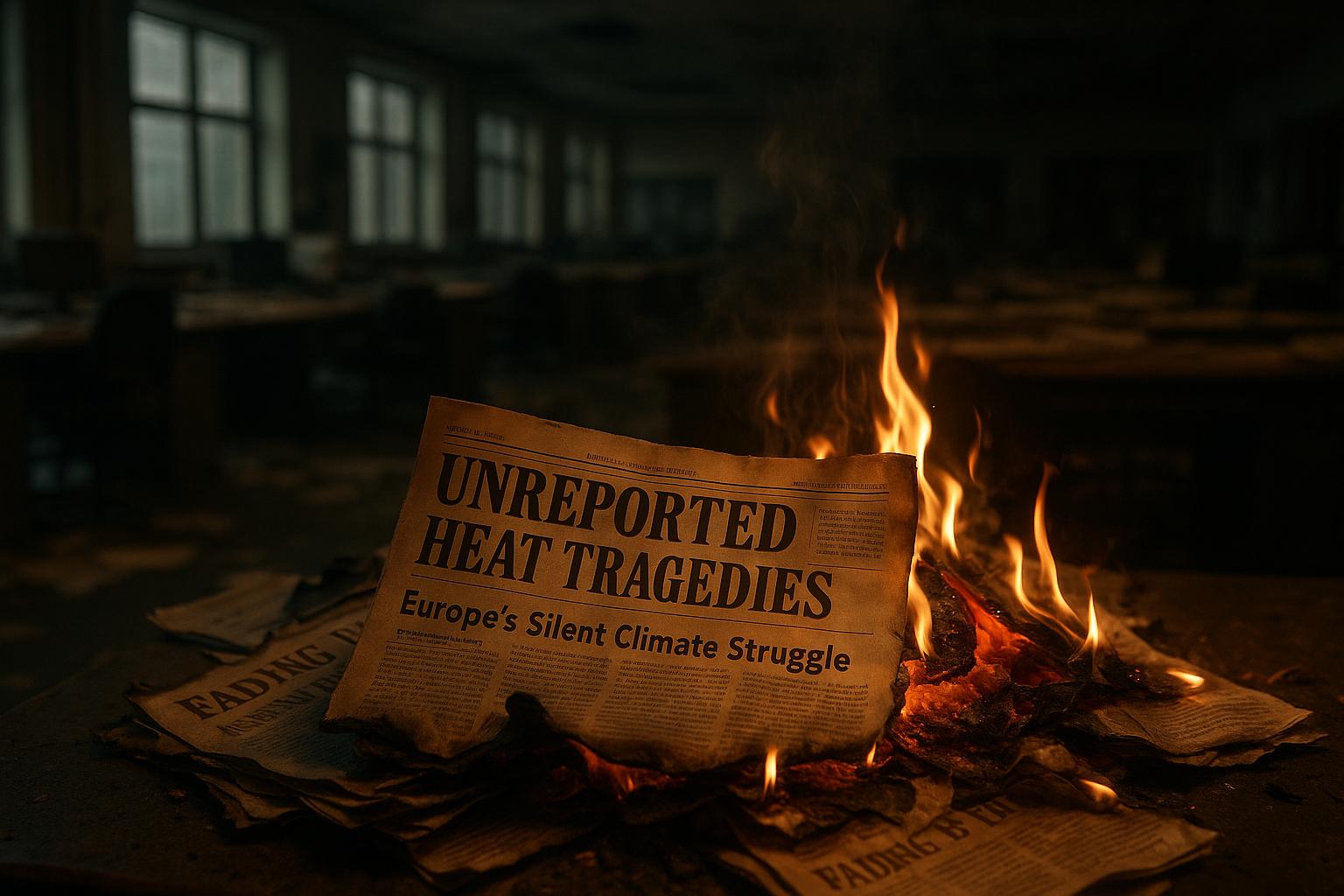A recent study conducted by researchers from Imperial College London and the London School of Hygiene & Tropical Medicine has revealed a stark and alarming link between climate change and heat-related deaths across Europe during the summer of 2025. The analysis, encompassing data from 854 major cities which house nearly a third of Europe’s population, estimates that out of 24,400 heat-related fatalities, approximately 16,500—or nearly 68%—were directly attributable to human-induced climate change. This finding reaffirms the deadly consequences of rising temperatures driven by greenhouse gas emissions.
The summer of 2025 ranked as the fourth warmest on record for Europe, with urban temperatures soaring between 2.2°C to 3.6°C above natural baselines due to global warming. Southern European countries were among the hardest hit, with Italy suffering 4,597 heat deaths, Spain 2,841, followed by Germany, France, and the UK, which recorded 1,477, 1,444, and 1,147 fatalities respectively. Notably, capital cities such as Rome, Athens, and Bucharest faced the highest per-capita death rates amid these extreme conditions. Older adults proved particularly vulnerable, accounting for 85% of the fatalities, underscoring the demographic’s heightened risk. Health experts warn that these figures likely underestimate the true toll since heat is often not explicitly recorded on death certificates, rendering it a “silent killer” hidden within broader mortality statistics.
Beyond its devastating human cost, the intensifying heat threatens Europe’s public health infrastructure and urban environments. Despite improvements in emergency responses since the catastrophic 2003 heatwave, many cities and national health systems grapple with escalating summer temperatures coupled with ageing populations. The study highlights urgent adaptation needs, including the development of local heatwave action plans, expansion of green and shaded urban spaces, prioritisation of air conditioning for retirement homes and vulnerable groups, and the roll-out of early warning systems alongside robust public awareness campaigns. These measures would bolster resilience against increasingly frequent and severe heat episodes.
The ramifications extend beyond health, profoundly affecting the continent’s tourism sector. Heatwaves deter outdoor cultural events, hikes, and midday excursions, pushing a shift in travel patterns and reducing visitor numbers especially during peak summer months. Coastal destinations face additional climate stressors such as beach erosion and water quality deterioration. Many heritage hotels and iconic attractions lack adequate cooling infrastructure, placing tourists and staff at greater risk. Southern Europe—particularly Spain, France, and Italy—is experiencing declining summer bookings, imperilling the economic sustainability of regions heavily reliant on seasonal tourism and prompting calls for climate-conscious tourism strategies.
Experts stress that while adaptation is vital, mitigating climate change remains the most effective long-term solution. Phasing out fossil fuels and aggressively reducing greenhouse gas emissions could curb the trajectory of rising temperatures and related health emergencies. Meanwhile, policymakers, public health authorities, and tourism boards must coordinate efforts to implement cross-sectoral protections—from heatwave emergency protocols to investments in shade and cooling infrastructure. For European destinations dependent on summer travel, embracing sustainable and diversified tourism that aligns with evolving climate realities is critical to safeguarding both human health and economic stability.
The deadly summer heatwave of 2025 thus signals a fundamental shift in the challenges facing Europe. It calls for a dual approach of urgent health system preparedness and broad environmental reform to confront the escalating risks posed by climate change. This multifaceted strategy will be essential to protect vulnerable populations, maintain thriving urban and tourism environments, and secure a resilient future amid an increasingly warm and unpredictable continent.
📌 Reference Map:
- Paragraph 1 – [1], [2], [3]
- Paragraph 2 – [1], [2], [3]
- Paragraph 3 – [1], [4]
- Paragraph 4 – [1], [5]
- Paragraph 5 – [1]
- Paragraph 6 – [1], [6]
Source: Noah Wire Services
